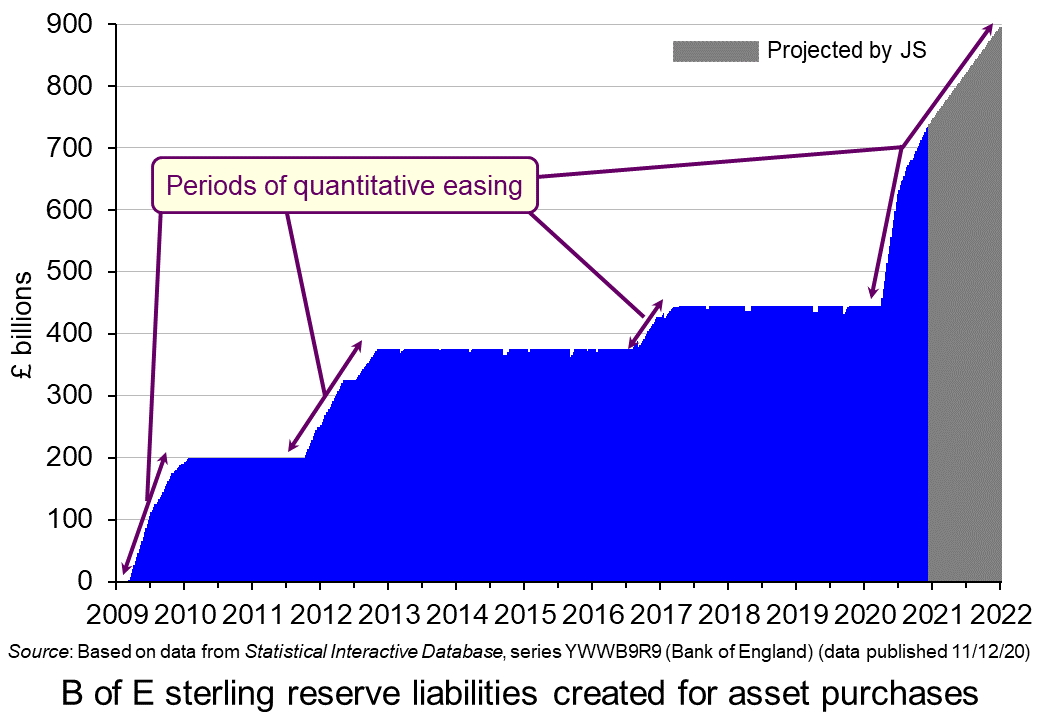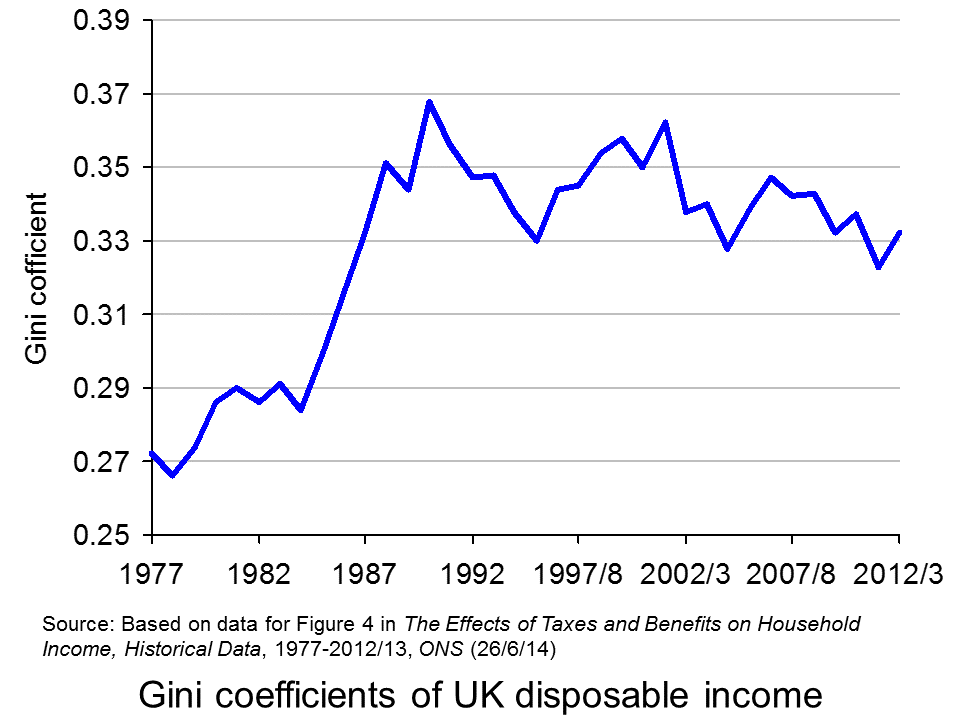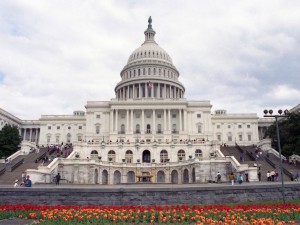 The BBC podcast linked below looks at the use of quantitative easing since 2009 and especially the most recent round since the onset of the pandemic.
The BBC podcast linked below looks at the use of quantitative easing since 2009 and especially the most recent round since the onset of the pandemic.
Although QE was a major contributor to reducing the depth of the recession in 2009–10, it was barely used from 2013 to 2020 (except for a short period in late 2016/early 2017). The Coalition and Conservative governments were keen to get the deficit down. In justifying pay restraint and curbing government expenditure, Prime Ministers David Cameron and Theresa May both argued that there ‘was no magic money tree’.
But with the severely dampening effect of the lockdown measures from March 2020, the government embarked on a large round of expenditure, including the furlough scheme and support for businesses.
 The resulting rise in the budget deficit was accompanied by a new round of QE from the beginning of April. The stock of assets purchased by the Bank of England rose from £445 billion (the approximate level it had been since March 2017) to £740 billion by December 2020 and is planned to reach £895 billion by the end of 2021.
The resulting rise in the budget deficit was accompanied by a new round of QE from the beginning of April. The stock of assets purchased by the Bank of England rose from £445 billion (the approximate level it had been since March 2017) to £740 billion by December 2020 and is planned to reach £895 billion by the end of 2021.
So with the effective funding of the government’s deficits by the creation of new money, does this mean that there is indeed a ‘magic money tree’ or, indeed, a ‘magic money forest’? And if so, is it desirable? Is it simply stoking up problems for the future? Or will, as modern monetary theorists maintain, the extra money, if carefully spent, lead to faster growth and a reducing deficit, with low interest rates making it easy to service the debt?
The podcast explores these issues. There is then a longer list of questions than normal relating to the topics raised in the podcast.
Podcast
Questions
- Which of the following are stocks and which are flows?
(a) Money
(b) Income
(c) The total amount people save each month
(d) The money held in savings accounts
(e) Public-sector net debt
(f) Public-sector net borrowing
(g) National income
(h) Injections into the circular flow of income
(i) Aggregate demand
(j) Wealth
- How do banks create money?
- What is the role of the Debt Management Office in the sale of gilts?
- Describe the birth of QE.
- Is raising asset prices the best means of stimulating the economy? What are the disadvantages of this form of monetary expansion?
- What are the possible exit routes from QE and what problems could occur from reducing the central bank’s stock of assets?
- Is the use of QE in the current Covid-19 crisis directly related to fiscal policy? Or is this use of monetary policy simply a means of hitting the inflation target?
- What are the disadvantages of having interest rates at ultra-low levels?
- Does it matter if the stock of government debt rises substantially if the gilts are at ultra-low fixed interest rates?
- What are the intergenerational effects of substantial QE? Does it depend on how debt is financed?
- How do the policy recommendations of modern monetary theorists differ from those of more conventional macroeconomists?
- In an era of ultra-low interest rates, does fiscal policy have a greater role to play than monetary policy?
 In his 1971 book, Income Distribution, Jan Pen, a Dutch economist, gave a graphic illustration of inequality in the UK. He described a parade of people marching by. They represent the whole population and the parade takes exactly one hour to pass by. The height of each person represents his or her income. People of average height are the people with average incomes – the observer is of average height. The parade starts with the people on the lowest incomes (the dwarfs), and finishes with those on the highest incomes (the giants).
In his 1971 book, Income Distribution, Jan Pen, a Dutch economist, gave a graphic illustration of inequality in the UK. He described a parade of people marching by. They represent the whole population and the parade takes exactly one hour to pass by. The height of each person represents his or her income. People of average height are the people with average incomes – the observer is of average height. The parade starts with the people on the lowest incomes (the dwarfs), and finishes with those on the highest incomes (the giants).
Because income distribution is unequal, there are many tiny people. Indeed, for the first few minutes of the parade, the marchers are so small they can barely be seen. Even after half an hour, when people on median income pass by, they are barely waist high to the observer.
The height is growing with tantalising slowness, and forty-five minutes have gone by before we see people of our own size arriving. To be somewhat more exact: about twelve minutes before the end the average income recipients pass by.
In the final minutes, giants march past and then in the final seconds:
the scene is dominated by colossal figures: people like tower flats. Most of them prove to be businessmen, managers of large firms and holders of many directorships and also film stars and a few members of the Royal Family.
The rear of the parade is brought up by a few participants who are measured in miles. Indeed they are figures whose height we cannot even estimate: their heads disappear into the clouds and probably they themselves do not even know how tall they are.
Pen’s description could be applied to most countries – some with even more dwarfs and even fewer but taller giants. Generally, over the 43 years since the book was published, countries have become less equal: the giants have become taller and the dwarfs have become smaller.
The 2011 Economist article, linked below, uses changes in Gini coefficients to illustrate the rise in income inequality. A Gini coefficient shows the area between the Lorenz curve and the 45° line. The figure will be between 0 and 1 (or 0% and 100%). a figure of 0 shows total equality; a figure of 1 shows a situation of total inequality, where one person earns all the nation’s income. The higher the figure, the greater the inequality.
 The chart opposite shows changes in the Gini coefficient in the UK (see Table 27 in the ONS link below for an Excel file of the chart). As this chart and the blog post Rich and poor in the UK show, inequality rose rapidly during the years of the 1979–91 Thatcher government, and especially in the years 1982–90. This was associated with cuts in the top rate of income tax and business deregulation. It fell in the recession of the early 1990s as the rich were affected more than the poor, but rose with the recovery of the mid- to late 1990s. It fell again in the early 2000s as tax credits helped the poor. It fell again following the financial crisis as, once more, the rich were affected proportionately more than the poor.
The chart opposite shows changes in the Gini coefficient in the UK (see Table 27 in the ONS link below for an Excel file of the chart). As this chart and the blog post Rich and poor in the UK show, inequality rose rapidly during the years of the 1979–91 Thatcher government, and especially in the years 1982–90. This was associated with cuts in the top rate of income tax and business deregulation. It fell in the recession of the early 1990s as the rich were affected more than the poor, but rose with the recovery of the mid- to late 1990s. It fell again in the early 2000s as tax credits helped the poor. It fell again following the financial crisis as, once more, the rich were affected proportionately more than the poor.
 The most up-to-date international data for OECD countries can be found on the OECD’s StatExtracts site (see chart opposite: click here for a PowerPoint). The most unequal developed county is the USA, with a Gini coefficient of 0.389 in 2012 (see The end of the American dream?), and US inequality is rising. Today, the top 1% of the US population earns some 24% of national income. This compares with just 9% of national income in 1976.
The most up-to-date international data for OECD countries can be found on the OECD’s StatExtracts site (see chart opposite: click here for a PowerPoint). The most unequal developed county is the USA, with a Gini coefficient of 0.389 in 2012 (see The end of the American dream?), and US inequality is rising. Today, the top 1% of the US population earns some 24% of national income. This compares with just 9% of national income in 1976.
Many developing countries are even less equal. Turkey has a Gini coefficient of 0.412 and Mexico of 0.482. The figure for South Africa is over 0.6.
When it comes to wealth, distribution is even less equal. The infographic, linked below, illustrates the position today in the USA. It divides the country into 100 equal-sized groups and shows that the top 1% of the population has over 40% of the nation’s wealth, whereas the bottom 80% has only 7%.
So is this inequality of income and wealth desirable? Differences in wages and salaries provide an incentive for people to work harder or more effectively and to gain better qualifications. The possibility of increased wealth provides an incentive for people to invest.
But are the extreme differences in wealth and income found in many countries today necessary to incentivise people to work, train and invest? Could sufficient incentives exist in more equal societies? Are inequalities in part, or even largely, the result of market imperfections and especially of economic power, where those with power and influence are able to use it to increase their own incomes and wealth?
Could it even be the case that excessive inequality actually reduces growth? Are the huge giants that exist today accumulating too much financial wealth and creating too little productive potential? Are they spending too little and thus dampening aggregate demand? These arguments are considered in some of the articles below. Perhaps, by paying a living wage to the ‘tiny’ people on low incomes, productivity could be improved and demand could be stimulated.
Infographic
 Wealth Inequality in America YouTube, Politizane (20/11/12)
Wealth Inequality in America YouTube, Politizane (20/11/12)
Articles
The rise and rise of the cognitive elite The Economist (20/1/11)
Inequality in America: Gini in the bottle The Economist (26/11/13)
Pen’s Parade: do you realize we’re mostly dwarves? LVTFan’s Blog (21/2/11)
Here Are The Most Unequal Countries In The World Business Insider, Andy Kiersz (8/11/14)
Inequality in the World Dollars & Sense, Arthur MacEwan (Nov/Dec 14)
Britain is scared to face the real issue – it’s all about inequality The Observer, Will Hutton (19/1/14)
The tame inequality debate FundWeb, Daniel Ben-Ami (Nov 14)
Is inequality the enemy of growth? BBC News, Robert Peston (6/10/14)
Data
GINI index World Bank data
List of countries by income equality Wikipedia
The Effects of Taxes and Benefits on Household Income, 2012/13 ONS (see table 27)
Income Distribution and Poverty: Gini (disposale income) OECD StatExtract
Questions
- Distinguish between income and wealth. Is each one a stock or a flow?
- Explain how (a) a Lorenz curve and (b) a Gini coefficient are derived.
- What other means are there of measuring inequality of income and wealth other than using Gini coefficients (and giants and dwarfs!)?
- Why has inequality been rising in many countries over the years?
- How do (a) periods of rapid economic growth and (b) recessions affect income distribution?
- Define ‘efficiency wages’. How might an increase in wages to people on low incomes result in increased productivity?
- What is the relationship between the degree of inequality and household debt? What implications might this have for long-term economic growth and future financial crises? Is inequality the ‘enemy of growth’?
 In its report A Distorted Debate: the need for clarity on Debt, Deficit and Coalition Aims, the Centre for Policy Studies claims that the public is confused by economic terminology surrounding the government’s finances. We try and understand this confusion and offer a bath-time solution!
In its report A Distorted Debate: the need for clarity on Debt, Deficit and Coalition Aims, the Centre for Policy Studies claims that the public is confused by economic terminology surrounding the government’s finances. We try and understand this confusion and offer a bath-time solution!
In a survey conducted for the Centre for Policy Studies only 10 per cent of Britons knew that despite cuts to parts of the government’s spending plans, the stock of public sector debt (also known as the national debt) is expected to rise by a further £60 billion by 2015. Rather, 47 per cent of respondents thought that debt would have fallen by this amount.
The confusion is not terribly surprising because there are two important core economic concepts that can confuse: stocks and flows. To try to help we will show how reference to a bath tub can hopefully eliminate the confusion. However, first, let us considerthe Coalition government’s principal fiscal objective. Its so-called fiscal mandate is for the cyclically-adjusted current budget to be in balance by 2015/16. In simple terms, the government wants to be able afford its day-to-day expenditures by this date, after taking into account where the economy is in the business cycle. In other words, if the economy’s output was at its sustainable or potential level in 2015-16 the government should be able to raise sufficient taxes to meet what it refers to as current expenditures. This would still allow the government to borrow to fund investment expenditure, e.g. infrastructural projects, which are enjoyed or consumed over a period of time.
An important thing to note about the fiscal mandate is that the government can expect to need to borrow money in order to afford its current expenditures up to 2015/16. Even beyond this date, assuming that the mandate can be met, it is likely to need money to afford capital expenditures. This is where we introduce the bath tub. Think of government spending as water coming through the bath taps while the taxes that government collect are water leaving through the plug hole. Therefore, spending and tax receipts are flows. If the water pouring into the bath (spending) is greater than the water leaving the bath (tax receipts), the level of water in the bath will rise. You can think of the water level in the bath as the stock of national debt. Therefore, if government is spending more than it receives it needs to borrow money. Borrowing is therefore a flow concept too. As it borrows, the stock of debt (the amount of water in our bath tub) rises.
So we know that government will continue to borrow in the near future. What it is hoping to be able to do, year by year, is begin to borrow less. It wants the deficit to fall. Then, if it can meet its target, it will at least be able to afford current expenditure (after adjustment for where the economy is in the cycle) by 2015/16. As the deficit begins to decline then the stock of debt will rise less quickly. But, the bath tub will continue to fill because more is flowing through the taps than is leaving through the plug hole. However, it will fill less quickly.
What our use of the bath tub analogy demonstrates is the confusion that can be caused when economic terminology is misused. It is important that the terms debt and deficit be used carefully and correctly. Therefore, the next time you are sitting in bath see if you can be the next Chancellor by understanding these key economic concepts.
Don’t know your debts from your deficit? You’re not alone Independent, Andrew Johnson (27/8/12)
Government unlikely to meet deficit targets, warns CPS Telegraph (27/8/12)
Coalition ‘most unlikely’ to meet key economic goals by next election Guardian, Andrew Sparrow (27/8/12)
Public ‘don’t know their debt from their deficit’ Public Finance, Vivienne Russell (28/8/12)
George Osborne ‘still failing to stop rising deficit’ Daily Express (28/8/12)
Questions
- Explain the difference between the concepts of government deficits and government debt?
- Explain what will happen to both the size of the government’s deficit and to its stock of debt if borrowing begins to decline.
- Can the stock of government debt fall if the government continues to borrow? Can the ratio of the stock of government debt fall relative to GDP (i.e. Debt/GDP), if government continues to borrow?
- With examples, explain the differences between the government’s current and investment (capital) expenditures.
- What are the economic arguments for trying to cut the deficit quickly or more slowly?
 There seems to be consensus among most politicians on both sides of the Atlantic that there needs to be a reduction in government deficits and debt as a proportion of GDP. But there is considerable debate as to how such reductions should be achieved.
There seems to be consensus among most politicians on both sides of the Atlantic that there needs to be a reduction in government deficits and debt as a proportion of GDP. But there is considerable debate as to how such reductions should be achieved.
Conservatives, Republicans and centre right parties in Europe, such as Greece’s Νεα Διμοκρατια (New Democracy) party, believe that there should be tough policies to reduce government expenditure and that the deficit should be reduced relatively quickly in order to retain the confidence of markets.
Politicians on the centre left, including Labour, many Democrats in the USA and centre-left parties in Europe, such as François Hollande’s Socialists, argue that the austerity policies pursued by centre-right governments have led to a decline in growth, which makes it harder to reduce the current deficit.
Then there is debate about what is happening to the structural deficit – the deficit that would remain at a zero output gap. Politicians on the centre right argue that their austerity policies are leading to a rapid reduction in the structural deficit. This, combined with the supply-side policies they claim they are implementing, will allow growth to be resumed more quickly and will increase the long-term growth rate (i.e. the growth in potential output).
Politicians on the centre left argue that deep cuts, by reducing short-term growth (even making it negative in some cases, such as the UK), are discouraging investment and construction. This in turn will lower the growth in potential output and make it harder to reduce the structural deficit.
The following podcast and articles consider these arguments – arguments that are often badly put by politicians, who often use ‘questionable’ economics to justify their party line.
Podcast
 A grand economic experiment (also at) More or Less: BBC Radio 4 (first part), Tim Harford (4/5/12) (Programme details)
A grand economic experiment (also at) More or Less: BBC Radio 4 (first part), Tim Harford (4/5/12) (Programme details)
Articles
The fine art of squeezing: Britain vs America BBC News, Stephanie Flanders (4/5/12)
The Slippery Structural Deficit Wall Street Journal (blog), Matthew Dalton (11/5/12)
The right kinds of austerity policy Financial Times (1/5/12)
We can fix up the old status quo to get out of this mess The Olympian, David Brooks (11/5/12)
Europe’s austerity drive is a misdiagnosis of its problems Gulf News, Joseph Stiglitz (13/5/12)
How Nick Clegg got it wrong on debt Guardian, Polly Curtis (9/5/12)
Ten Reasons Wall Street Should Be (Very) Worried About The U.S. Debt Forbes, Bruce Upbin (4/5/12)
Questions
- Distinguish between the structural and cyclical budget deficit.
- Explain the distinction between stocks and flows. Which of the following are stocks and which are flows: (a) public-sector deficit; (b) public-sector debt; (c) public-sector net cash requirement; (d) debt reduction; (e) a bank’s balance sheet?
- Under what circumstances will a reduction in the public-sector deficit lead to: (a) a reduction in the public-sector debt (total); (b) a reduction in the public-sector debt as a proportion of GDP?
- How would you decide what is the desirable level of the public-sector deficit: (a) in the short run; (b) in the long run?
- Explain and comment on the following statement from the Stephanie Flanders article: “What is clear is that America has been able to ‘cut its debt (sic) further and faster’ than Britain – but this has not been the result of any closet commitment to austerity. Quite the opposite.”
 The BBC podcast linked below looks at the use of quantitative easing since 2009 and especially the most recent round since the onset of the pandemic.
The BBC podcast linked below looks at the use of quantitative easing since 2009 and especially the most recent round since the onset of the pandemic.  The resulting rise in the budget deficit was accompanied by a new round of QE from the beginning of April. The stock of assets purchased by the Bank of England rose from £445 billion (the approximate level it had been since March 2017) to £740 billion by December 2020 and is planned to reach £895 billion by the end of 2021.
The resulting rise in the budget deficit was accompanied by a new round of QE from the beginning of April. The stock of assets purchased by the Bank of England rose from £445 billion (the approximate level it had been since March 2017) to £740 billion by December 2020 and is planned to reach £895 billion by the end of 2021.  The Magic Money Forest (alternative link)
The Magic Money Forest (alternative link)



